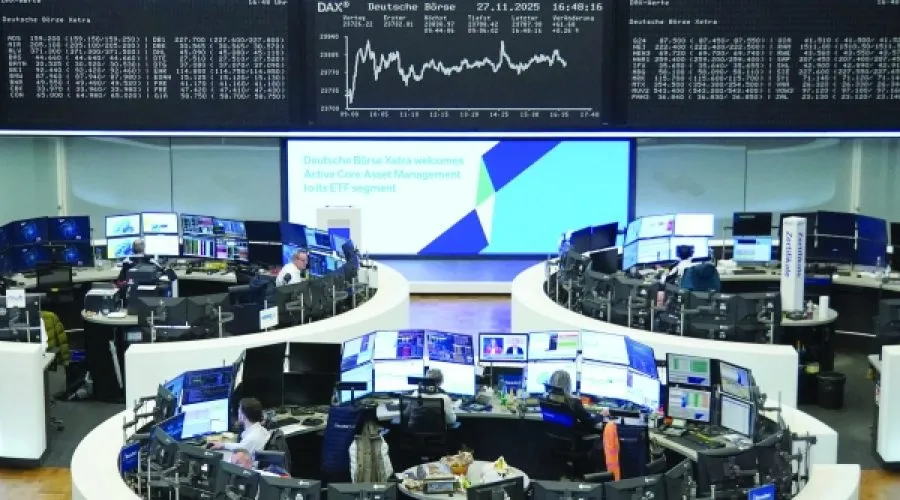Stocks Slide Amid Fed Rate Cut Speculation and Trading Outage: What Investors Need to Know
Global stock markets entered a cautious final trading session of the month on Friday, disrupted by a technical outage at CME Group, a major exchange operator. The outage affected trading in numerous futures contracts, including those on currencies, commodities, Treasuries, and stocks, significantly reducing market liquidity.
The disruption occurred as US investors returned from the Thanksgiving holiday for a shortened session. Some currency trading gradually resumed on CME’s EBS platform by 13:05 GMT.
Europe’s STOXX 600 index was largely flat for the day, despite a 0.5 percent gain throughout November. This monthly increase marked its weakest performance since June, even though the index had reached record highs just weeks earlier.
In the United States, the S&P 500 is set to register its first monthly decline since April, falling 0.4 percent in November. However, it rebounded from two-month lows experienced a week ago, when the potential drop had reached nearly 5 percent.
November proved volatile for global equities, driven by concerns over the inflated valuations of tech stocks and the resolution of a US government shutdown that lasted a record 43 days. Bitcoin, often viewed as a barometer of investor risk appetite, declined by 16 percent during the month.
The government shutdown also resulted in a lack of economic data, prompting the Federal Reserve to take a cautious stance on further monetary easing. Nevertheless, prominent Fed officials, including Governor Christopher Waller and New York Fed President John Williams, have expressed support for a rate cut next month—an expectation that has played a key role in supporting stock market recovery.
“Typically, volatility is expected in September and October; this year, it shifted to November, but most losses have since been recovered,” said Samy Chaar, an economist at Lombard Odier. He noted that while the market had initially priced a 30 percent probability for a rate cut in December, that probability has surged to over 80 percent, fueling the month-end rally.
Federal funds futures currently indicate an 85 percent chance of a December rate cut, compared to only 30 percent a week ago, according to CME FedWatch data.
In currency markets, the US dollar edged higher against a basket of major currencies but was on track for its largest weekly drop since July, ending the month nearly flat. The Japanese yen strengthened modestly, with the dollar declining by 0.24 percent to 156.11 yen. The yen had fallen to a ten-month low of 157.9 last week, raising investor anticipation of potential intervention by Japanese authorities following weeks of verbal warnings aimed at halting its decline.
New data showed Tokyo’s core consumer prices increased by 2.8 percent year-on-year in November, slightly above forecasts of 2.7 percent. This data, along with others, has sustained expectations of a rate hike from the Bank of Japan.
“Month-end FX performance can often be influenced by unpredictable flows,” noted strategists from MUFG in a market commentary.
The Australian and New Zealand dollars posted notable gains this week, rising 1.1 percent and 1.8 percent respectively, as markets anticipate an end to their countries’ rate-cutting cycles. Additionally, minutes from the European Central Bank’s latest meeting suggested policymakers are not in a hurry to reduce interest rates.
— Reuters
Special Analysis by Omanet | Navigate Oman’s Market
The recent global market volatility, driven by technical outages and shifts in US monetary policy expectations, highlights the growing uncertainty and liquidity risks for businesses in Oman tied to international trade and investment cycles. Smart investors and entrepreneurs should monitor central bank signals closely, as an anticipated US rate cut could spur capital flows into emerging markets like Oman, but also prepare for potential short-term market disruptions. This period presents both a cautionary environment and an opportunity for strategic positioning amidst global financial recalibrations.



